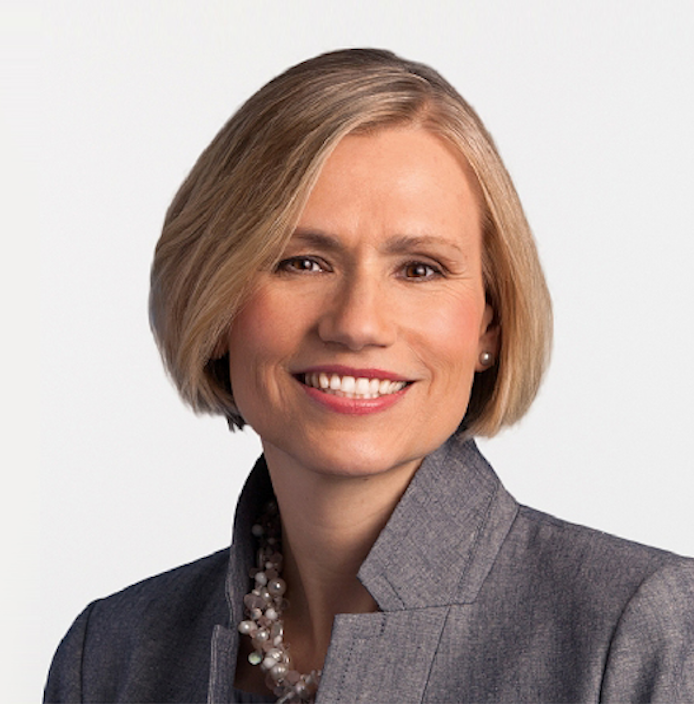by Kristina Hooper, Invesco Canada
Last week was a momentous one for central banks – the minutes from the March Federal Open Market Committee (FOMC) meeting were released, giving us insight into the Federal Reserve’s views on the global economy and rate cuts, and the European Central Bank (ECB) decided to remain on its ultra-accommodative path. We were reminded that central banks are critical for supporting growth, controlling inflation and stabilizing economies – a task that is growing increasingly difficult as these institutions become more politicized.
The Fed lowers expectations for rate cuts
The minutes from the March FOMC meeting show that the Federal Reserve (Fed) does not expect to raise rates this year as a result of the global economic slowdown and uncertainty over trade policy – but it also does not expect to cut rates any time soon either. It seems the Fed is confident that it has acted quickly enough in changing its policy stance, that it does not need to do more any time soon, and that the U.S. economy will be able to weather a global slowdown. That worries me, as the Fed may become complacent in remaining in this holding pattern – just as it became complacent about regularly raising rates last year – if it is not closely attuned to the data. The good news is that some committee members said they could go either way on whether the Fed’s next move should be to raise or lower rates, based on incoming data – which seems to me to indicate a desire to be data-dependent. In my view, the Fed must be committed to data dependency in order for its monetary policy to be successful this year.
The minutes changed market expectations dramatically: As of March 26, a greater than 65% probability was assigned to one or more rate cuts by the end of the year.1 As of Friday, April 12, that probability had fallen to 36%.1 And so it seems the Fed is comfortable that just hitting the “pause button” on normalization will be enough to support the U.S. and global economy. But will that be the case?
Bank of Canada also in a holding pattern
The Bank of Canada (BOC) clearly has a similar position to that of the Fed. In a recent speech, BOC Governor Stephen Poloz suggested that the BOC will keep rates below the neutral rate given the headwinds facing the Canadian economy. These include trade uncertainty, housing market weakness and higher debt levels for Canadian households. But, as with the U.S., we have to ask whether that will be enough, given that the Bank of Canada does not appear inclined to lower rates any time soon.
The ECB holds the line for now – but will it need to do more?
The European Central Bank is in a similar position. Last week, the ECB met and decided to leave its ultra-accommodative monetary policy unchanged. The purported rationale was to give recent monetary policy stimulus time to work its way into the economy. But I wonder if this is enough given the deterioration in economic data that has occurred in recent months. ECB President Mario Draghi was clear in his remarks: “Incoming data continue to be weak, especially for the manufacturing sector… The slower growth momentum is expected to extend into the current year.”2 And will it be enough if systemic stress rises in coming months, as geopolitical risks rise given EU elections, Spanish elections and growing debt issues for countries such as Italy?
Ultimately, we have to wonder if the ECB is looking for an adequate monetary policy tool – one that has none of the negative unintended consequences of current policy – but hasn’t found it. Draghi did confirm that policymakers were considering measures to mitigate the negative impact on banks of its negative deposit rates and new targeted longer-term refinancing operations (TLTRO) loans to banks, but said it was too early to decide. However, I am not sure that it would matter if the ECB did do more. As I have said before, Draghi is a “lame duck,” as are two other members of the executive board of the ECB. In addition, eight of the 19 central bank governors of the ECB governing council will step down by the end of the year. And so markets may not have much confidence in whatever decisions the current ECB makes, assuming the next edition of the ECB may alter course.
Central banks face a growing tide of politicism
This last week is a reminder that central banks continue to bear an enormous burden for supporting growth, controlling inflation and stabilizing economies in the face of growing challenges, as outline by the International Monetary Fund (IMF) in its World Economic Outlook last week. That responsibility is growing increasingly difficult as central banks become more politicized.
To illustrate this point, The Economist magazine devoted its most recent cover story to this topic with the title, “Interference Day – Central Banks in the Age of Populism.” For example, because European elections will be held in May, the selection of Draghi’s successor is likely to be more political in nature. Politicization of central banks, which we have seen in Turkey and India as well as the U.S., is a significant enough issue that it was a major topic at last week’s IMF meeting. Draghi even weighed in on the U.S., saying, he is “certainly worried about central bank independence” especially “in the most important jurisdiction in the world.”3 Let’s face it: it seems logical that central banks could come under attack from populist movements seeking to take control of a bastion of elitism and expertise that is far removed from democracy. And the reality is that central bank policies exacerbated wealth inequality in the past decade, helping to pave the way from geopolitical disruption and the rise of populism.
Why is this a concern? If central banks become more politicized, they may not be able to intervene as effectively in future crises. This could be particularly problematic given that countries may have greater difficulty intervening fiscally in the face of crises given high debt levels. And these debt levels are continuing to grow despite many countries experiencing economic expansions, which is typically the time when governments are expected to pay down debt rather than take on more.
We were reminded of the issue of debt just last week: According to the U.S. Treasury Department, the U.S. budget deficit for March clocked in at -$146.9 billion, leaving the six-month deficit (since Oct. 1, 2018) at $691.2 billion, 15.3% larger than the same period in fiscal 2018. And that, of course, exacerbates the overall national debt situation. Federal debt held by the public is projected to reach $16.6 trillion at the end of 2019 – which is 78% of gross domestic product (GDP) – and is expected to grow to $28.7 trillion by 2029 – which would represent 93% of GDP.4
Rising debt is all around us. The Italian government conceded it will not reach the budget deficit target that it had agreed to with European Union authorities (which will likely result in renewed tensions with Brussels). The budget deficit is expected to rise to more than 3% of GDP next year, reach 3.7% by 2022, and rise even higher in future years.5 According to the IMF’s most recent Fiscal Monitor, Italy’s public debt ratio is expected to rise to 134.4% of GDP in 2020 and 138.5% of GDP in 2024. This would violate Italy’s covenant with the European Union as part of the Maastricht Treaty, which set debt and deficit targets of 3% of GDP and 60% of GDP, respectively.
And so we will need to follow this situation closely.
What to watch in the coming week:
Company earnings. Earnings season goes into a higher gear this week. Thus far we have seen companies report an increase in sales but a decline in earnings, with the foreign exchange rate and higher labor costs cited as key factors impacting profits.6 I expect that trend to continue.
Data releases. A slew of U.S. data should give us a better sense of what first quarter GDP growth could be, including:
- S. March retail sales
- S. March industrial production
- S. February business inventories
- S. March housing starts
- S. February international trade
I will be particularly interested in retail sales, given what appears to be a drop in consumer confidence, especially as surveys are indicating that households do not believe they received a tax cut as a result of the 2017 tax reform legislation; I expect retail sales will hold up, given the rally in the stock market. I will also be interested in industrial production, given how recent manufacturing Purchasing Managers Indexes suggest weakness. I do believe we will see weakness there.
Chinese GDP. Chinese GDP for the first quarter will be released on April 17, which should offer real evidence of how the trade war with the U.S. has affected the economy. Given recent positive data and the optimistic comments from Premier Le Keqiang at the Boao Forum, I wouldn’t be surprised to see growth slightly exceed expectations.
Brexit. While the UK was granted a stay of execution from crashing out of the EU with a deadline extension through Oct. 31, the Brexit situation remains a mess, with UK Prime Minister Theresa May urging legislators to “reflect” on it over Easter recess. Further negotiations will occur between the prime minister’s government and the Labour Party while Parliament is on Easter recess, but there are low expectations for any viable solution. Expect politicians on both sides of the issue to be making a lot of noise in preparation for the upcoming EU elections. This situation does not appear likely to be resolved quickly, which suggests that we could see downward pressure on business investment as a result of more economic policy uncertainty.
India. Indian elections are underway, but they will last for 11 days. We have already seen a rise in tensions with Pakistan, and a repeat of this is the biggest risk coming out of these elections (as Prime Minister Narendra Modi tries to prove his credentials). Modi’s party is expected to remain in power, but not with the majority they currently enjoy.
Spain. Spanish elections are only two weeks away (April 28) and things have been quiet so far. Polls suggest that there could be a tight outcome and that a coalition would be needed. The Socialists look set to gain the most seats, but it is not guaranteed they will form the next government. Another period of uncertainty awaits.
1 Source: CME Group, FedWatch Tool
2 Source: Reuters, “Draghi comments at ECB press conference,” April 10, 2019
3 Source: Reuters, “ECB’s Draghi worried about Fed’s independence,” April 13, 2019
4 Source: Congressional Budget Office, January 2019
5 Source: The Telegraph, April 10, 2019
6 Source: FactSet, April 12, 2019
Important information
Brexit refers to the scheduled exit of the UK from the European Union.
The Federal Open Market Committee (FOMC) is a committee of the Federal Reserve Board that meets regularly to set monetary policy, including the interest rates that are charged to banks.
Gross domestic product is a broad indicator of a region’s economic activity, measuring the monetary value of all the finished goods and services produced in that region over a specified period of time.
Purchasing Managers Indexes are based on monthly surveys of companies worldwide, and gauge business conditions within the manufacturing and services sectors.
The opinions referenced above are those of Kristina Hooper as of April 15, 2019. These comments should not be construed as recommendations, but as an illustration of broader themes. Forward-looking statements are not guarantees of future results. They involve risks, uncertainties and assumptions; there can be no assurance that actual results will not differ materially from expectations.
This post was originally published at Invesco Canada Blog
Copyright © Invesco Canada Blog














